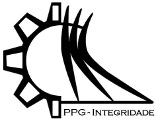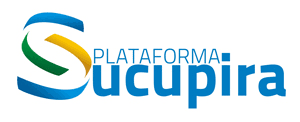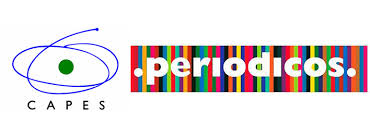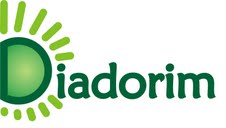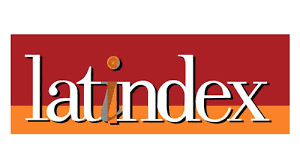A FOSM-BASED RELIABILITY ASSESSMENT OF STEAM GENERATOR TUBES UNDER CRACKING DEGRADATION
DOI:
https://doi.org/10.26512/ripe.v2i15.21383Keywords:
Fracture mechanics. Structural reliability. FOSM method.Abstract
Steam generator tubes are critical parts in the safety and operability of nuclear power plants. Thus, the degradation in steam generator tubes must be prevented. These tubes are subjected to the degradation mechanism of stress corrosion cracking, which is characterized by several uncertainties. The assessment of structural reliability of the steam generator tubes is essential for preventing the occurrence of failure events. In the present work, a study is carried out for assessing the structural reliability of the steam generator tubes containing cracks, by using first order second-moment (FOSM) concepts. The limit state function is based on a limit load model provided by Eletric Power Research Institute (2001), which describes the failure criterion. The applicability of the FOSM method as a methodology for predicting the reliability of steam generator tubes is checked by comparing results of calculated failure probability with ones obtained from Monte Carlo simulation. The FOSM method has provided a non-conservative reliability assessment for the steam generator tubes containing cracks, and are eligible for estimating the failure probability of this safety-critical structure.
References
Bergant, M. A., Yawny, A. A., & Perez Ipina, J. E., 2015. Failure assessment diagram in structural integrity analysis of steam generator tubes. Procedia Materials Science, vol. 8, pp. 128-138.
Cizelj, L., Mavko, B., & Hiesch-Opperman, H., 1994. Application of first and second order reliability methods in the safety assessment of cracked steam generator tubing. Nuclear Engineering and Design, vol. 147, pp. 1-10.
Det Norske Veritas, 1992. Structural Reliability Analysis of Marine Structures. Det Norske Veritas, DNV Classification Notes no. 30.6.
Eletric Power Research Institute, 2001. Steam Generator Degradation Specific Management Flaw Handbook. Eletric Power Research Institute, Report 1001191.
Eletric Power Research Institute, 2006. Steam Generator Integrity Assessment Guidelines, Revision 2. Eletric Power Research Institute, Report 1012987.
Erdogan, F., 1976. Ductil fracture theories of pressurized pipes and containers. International Journal of Pressure Vessels & Piping, vol. 4, pp. 253-283.
Guoshoa, C., & Shuho, D., 1996. Study on the reliability assessment methodology for pressure vessels containing defects. International Journal of Pressure Vessels & Piping, vol. 69, pp. 273-277.
Hasofer, A. M., & Lind, N. C., 1974. An exact and invariant first order reliability format. Proc. ASCE, J. Eng. Mech. Div., pp. 111-121.
Huh, N., Kim, J., Chang, Y., Kim, Y., Hwang, S., & Kim, J., 2006. Elastic-plastic fracture mechanics assessment for steam generator tubes with through-wall cracks. Fatigue & Fracture of Engineering Materials & Structures, vol. 30, pp. 131-142.
Maneschi, J. E., & Miranda, C. A. J., 2014.Mecanica da Fratura na Industria Nuclear. Rio de Janeiro: Lithos Edicao de Arte.
Melchers, R. E., 1987. Structural Reliability: Analysis and Prediction. Ellis Horwood Limited, 1st edition.
Nuclear Energy Institute, 2005. Steam Generator Program Guidelines, Revision 2. Nuclear Energy Institute, NEI 97-06.
Wang, X., & Reinhardt, W., 2003. On the assessment of through-wall circumferential cracks in steam generator tubes with tube supports. Journal of Pressure Vessel Technology, vol. 125, pp. 85-90.
Downloads
Published
Issue
Section
License
Given the public access policy of the journal, the use of the published texts is free, with the obligation of recognizing the original authorship and the first publication in this journal. The authors of the published contributions are entirely and exclusively responsible for their contents.
1. The authors authorize the publication of the article in this journal.
2. The authors guarantee that the contribution is original, and take full responsibility for its content in case of impugnation by third parties.
3. The authors guarantee that the contribution is not under evaluation in another journal.
4. The authors keep the copyright and convey to the journal the right of first publication, the work being licensed under a Creative Commons Attribution License-BY.
5. The authors are allowed and stimulated to publicize and distribute their work on-line after the publication in the journal.
6. The authors of the approved works authorize the journal to distribute their content, after publication, for reproduction in content indexes, virtual libraries and similars.
7. The editors reserve the right to make adjustments to the text and to adequate the article to the editorial rules of the journal.


